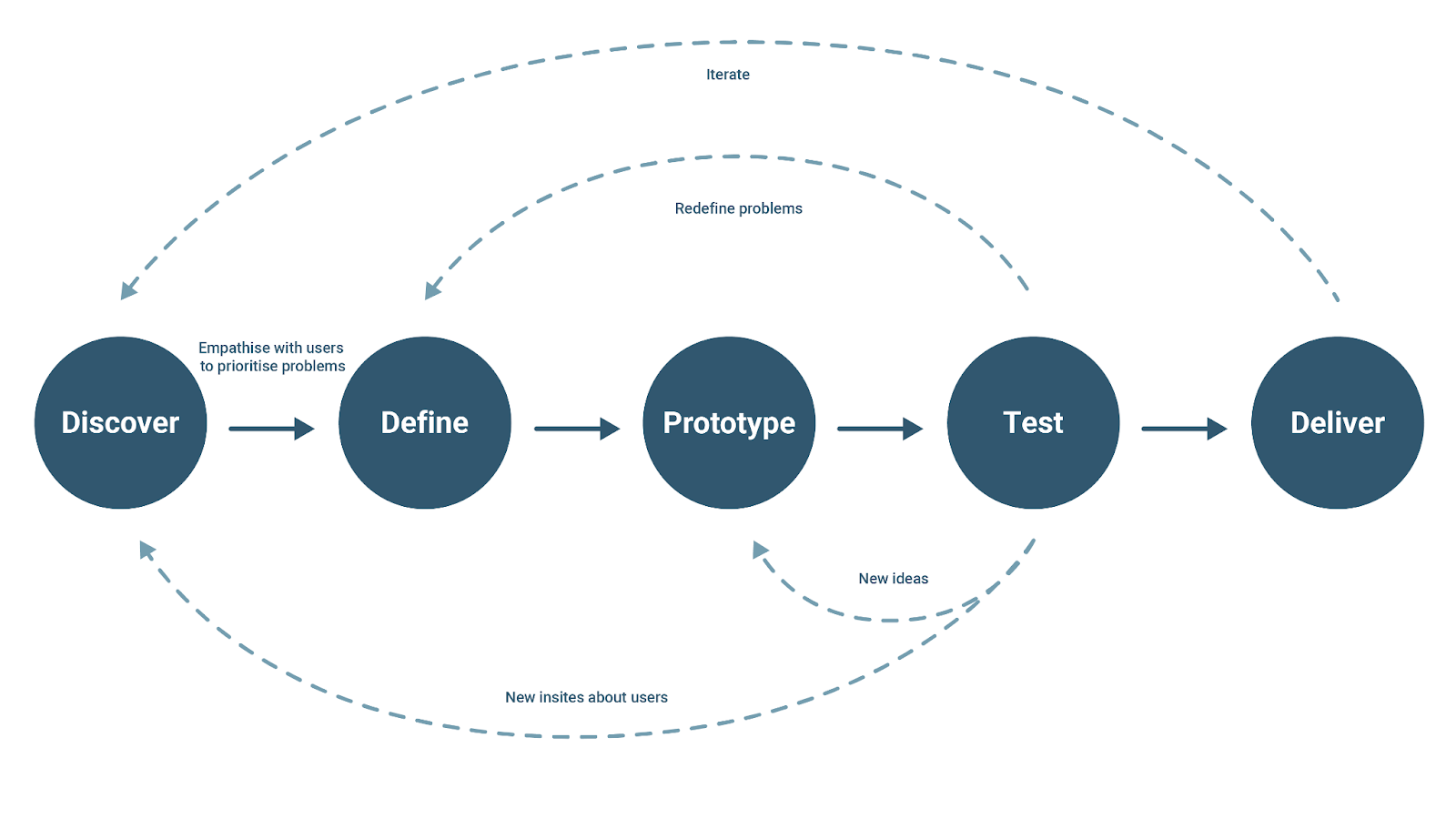Iterate and improve frequently
10/05/22 | All Guidelines and Documentation | B. Leading Agile TeamsVersion 1.0
Work with your organisation to make sure that you’re able to focus on improvements that have the most value.
Why it’s important
Services are never ‘finished’. Using agile methods means getting real people using your service as early as possible. Then making improvements throughout the lifetime of the service.
Making improvements means more than doing basic maintenance like fixing bugs in code, deploying security patches, and keeping call centre scripts up to date. If that’s all you do, you’ll be fixing symptoms rather than underlying problems. And over time, the service will stop meeting user needs.
Continuous improvement means you can respond to changes in user needs, technology or government policy throughout the lifetime of the service. So rather than having to be replaced, the service stays relevant until it’s ready to be retired.
What it means
An iterative design thinking process means we make decisions based on what users need, and solve a whole problem, instead of relying on historical data or making risky assumptions.

Discover
This means when given a challenge, start by understanding users and their needs as well as discovering any existing processes.
Define
Understanding the service from the users’ perspective, helps us prioritise what to focus on or improve. This stage involves the whole team but service designers and product managers mainly guide it.
Prototype
When we understand the problems we begin rapid prototyping, generating hypotheses to test with users and to get feedback from stakeholders. The prototyping stage is about testing ideas before committing to building them and is led heavily by content and interaction design roles.
Test
Testing prototypes with real users may:
- Spark new ideas for the service
- reveal a need to redefine the problem
- and help us learn more about our users
Based on our findings, we can see what is working well and what might need to be iterated for better usability and understanding.
Develop
Now you have confidence that what you plan to build works, you can start development, working with developers to break work into deliverable chunks.
Iteration isn’t just for the early stages of a service’s development but is continuous.
Running a live service doesn’t have to mean a full team working on the service 100% of the time during the live phase. But it does mean being able to make substantial improvements throughout the lifetime of the service.
